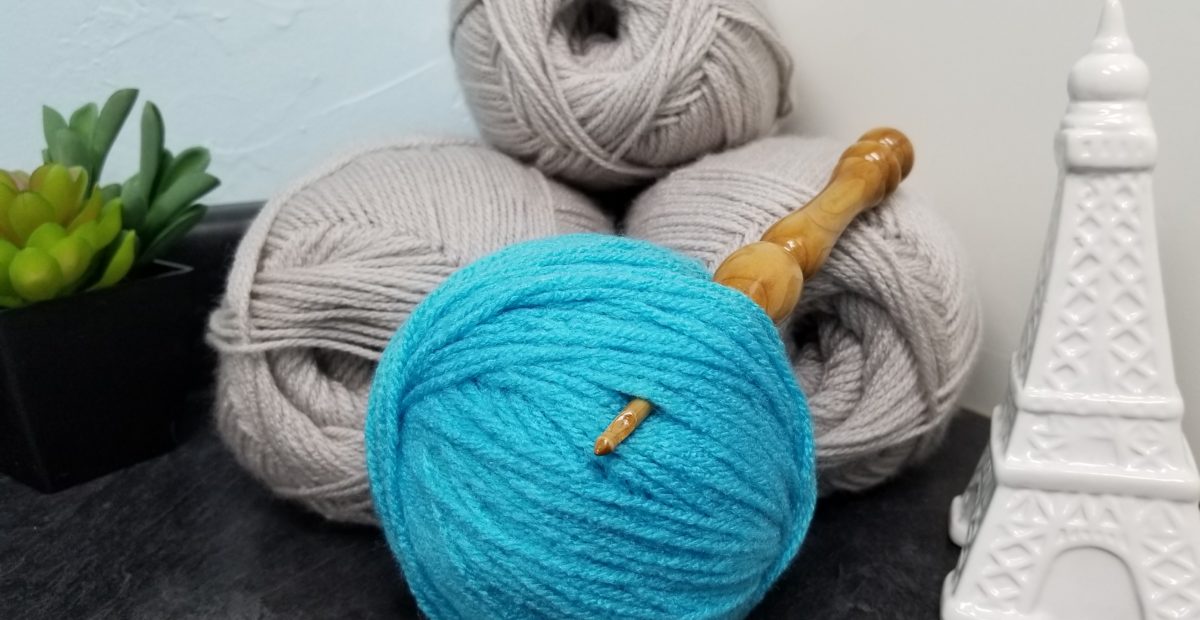We learned about the different weights of yarn. Now let us consider how they work up in a project. A thicker weight yarn tends to make a more dense fabric and a finer weight tends to make a more soft movable fabric. The size of your hook will also have a bearing on the denseness of the crochet project you make.
Below are 3 swatches I made up and showed in an earlier post. I used the same size hook for all 3 as well as the same number of stitches and rows.

Bulky #5 Weight 
Medium #4 Weight 
Super Fine #1 Weight
I held each swatch up to allow the light to show through the fabric.
You can see the slate color is very dense. You can hardly see any light coming through the stitches. This kind of dense fabric is thick, sturdy and more rigid. It is perfect for making storage baskets since it would be able to hold its own shape.
The green color is slightly less dense, with a little more light showing through than the slate color. This fabric has a little bit more movement to it, but not much. It would be good for a bulky sweater.
The yellow color has the most open stitches, showing a lot of light through. This type of fabric is more open and lacy. It offers a movable fabric with beautiful drape. This works out perfectly for clothing, especially clothing for summer. The open stitches allow the fabric to breathe and not get too hot.
Now as mentioned before, the denseness of the fabric also has to do with the size hook you choose. Most yarn labels will give a recommended size hook for that yarn. If you were to go down multiple hook sizes, that yarn could be made into a dense fabric.
For instance, amigurumi (a crocheted stuffed toy) would require a denser fabric. As you stuff the toy, you don’t want the stuffing to come through. So if you were to use a #4 weight yarn that recommends a 5.5 mm hook, you would most likely want to go down to a 4 mm hook. This would allow for a dense and stiff fabric that holds it shape.
